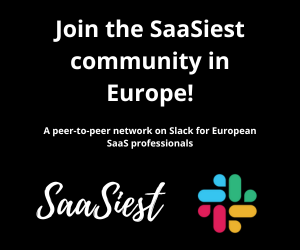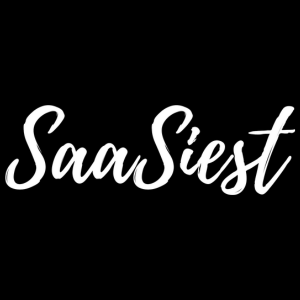Sometime in the 80s, Kodak, a photography giant, approached IBM, a leading tech enabler, to design and set up their data center.
Building something digital was out of Kodak’s niche but the core competency of IBM. They knew something like a digital data center could be easily managed and set up by IBM. And that too at a fraction of the cost they would’ve otherwise spent on building an in-house team.
This coming together of two of the world’s biggest companies catalyzed a new way of getting things done- today, what we call outsourcing.
Several businesses followed the lead of Kodak. They chose and trusted the tech competency of IBM to build, develop, and manage their digital products. And that’s how outsourcing product development or overall IT operations became a trend.
It wouldn’t be wrong to call outsourcing the longest-leading process trend for any business or industry. Through the decades, several new processes came in and became obsolete.
But not outsourcing!
Despite the many ups and downs in the global market, the percentage of companies outsourcing product development has been stubbornly stable. In fact, it has outright increased.
All credits go to the added technology capabilities, cost optimization, product innovation, and positive business impact that outsourcing brings to the table. It creates a canvas for both- the outsourcing company and the customer (in this case, businesses) to paint the perfect picture. True, if partnered with the right company, outsourcing can help businesses unfold magic with their product ideas.
How to successfully outsource product development
The percentage of companies outsourcing product development remains stable despite the volatility in the digital ecosystem. Global IT outsourcing spending has increased almost double-fold from US$ 800 billion in 2008 to US$ 1.3 trillion in 2022.
Why?
The answer is simple- the success rate that outsourcing has been witnessing!
When outsourcing to a team in another country, tasting success is a matter of strategic decision-making, planning, choices, and continuous involvement.
Here’s how you can successfully outsource product development.
Finding a partner rather than a vendor
There’s a thin line separating outsourcing partners from vendors. Vendors would focus only on delivering the tasks assigned, while partners would be more concerned about your business and their role in its success.
An outsourcing partner would take an interest in your product. They’d develop new ideas, features, and ways to improve the product. An outsourcing team taking ownership of the project will only be visible when they work as a partner rather than a vendor.
To assess a company’s interest in entering a partnership rather than a vendors transaction, one can follow a few simple rules:
- They can align with your corporate values and understand what motivates you
- They are interested in understanding your business’s core offering and the daily ins and outs
- They can anticipate the challenges they’ll face in the project
- They can offer flexibility based on the granularity of your needs
- They can add value to your project like faster time to market, process streamlining, and more
- They focus on innovation and design thinking
Every company can be an expert in outsourcing or product development. For you to successfully outsource, make sure that the company is an expert in every client they work with.
Hacking through the automation era
With automation becoming an integral part of the digital ecosystem, outsourcing companies have started integrating automation into several steps within the development process. Companies planning to automate processes are opting for outsourcing as the solution. And why not! Automation and outsourcing are not mutually exclusive.
IBM, one of the leading outsourcing providers across the globe, has displayed how intelligent automation and outsourcing should go hand in hand instead of being treated as substitutes or replacements for each other.
With the automation industry expected to grow at a CAGR of 8.59% between 2023 and 2030, there are countless automation tools that one can use to make their outsourcing relations stronger. Tasks like documentation, collaboration, storage, processing, and all can be automated to yield efficiency in core development requirements. Even during development, automated testing and DevOps can speed up the process. Further, onboarding the remote staff, training or knowledge transfer, and other things can be made more seamless by using automation in the outsourcing models.
Outsourcing partners can help you build intelligent automation solutions for RPA. And this combination of outsourcing and automation can yield profitable results. Outsourcing your automation requirements to offshore software development companies can help you build faster. They can be the skilled team to help you introduce the latest technologies within your organization.
Collaborating throughout the development lifecycle
Being involved is one of the most significant contributions an outsourcing customer can make to ensure success in their outsourcing relationship. It would be best if you were involved and followed throughout the development process. Find the golden collab hour with your remote team.
- Set-up status meetings: Ensure to keep track of the progress with the remote development team or the project manager they’ve assigned for your project.
- Be available for sprint discussions: For every sprint completed, have a dedicated person collaborating with the extended team to monitor every item or feature built closely.
- Have a one-on-one with developers: Whenever required or possible, get on a discussion with the developers writing codes to understand their thought process better.
Communication and coordination are widely recognized as the major challenges to successful outsourcing of product development. However, by setting up the right channels and adopting the agile software development approach, one can eliminate these challenges and experience better results.
Setting strategic plans
Start with setting the clear scope of your project. Create a user story to communicate your scope to the development team effectively. While entering an outsourcing product development partnership, one should be very strategic about the requirements, approach, and in-house skills present for the project. This would help you set a strategic plan of action.
A strategic plan should have goals, a code repository, documentation, tools for collaboration, and more. Another thing that many companies, especially tech innovative startups, fail to recognize in outsourcing is scope creep. Several new features or product improvement ideas might creep up after you’ve clearly defined the project scope. In such cases, there’s a crucial need to be transparent and mindful of your requests with the external team and the extension it might add to the project.
Ensuring provider’s outsourcing maturity
While outsourcing, as a practice, has been resistant to change, there has been a drastic shift in the way in which businesses outsource. Some have entered outcome-based contracts, while others are into the co-creation of products. Some are getting complete management from infrastructure set-up to development to experience with a digital center of excellence, while others are building teams as extensions to their in-house development team.
Different projects require different engagement and even outsourcing delivery models. One should assess the organization such that they land on a company that can fulfill their specific project requirements without having to make any compromises.
Ending note
Outsourcing is ubiquitous. Almost every organization is outsourcing one or the other part of their product to offshore experts. It’s no longer limited to the big shots or startups with massive funding. Every business can outsource product development today.
However, no matter how many best practices or tips you read out there. It all boils down to the partner that you choose. Your outsourcing should be deeply involved in the development process. And not just that. They should be keen on offering everything from building the code repository, development environment, product infrastructure, branching requirements, and development pipelines to cloud backups, security set-up, and documentation.
Make sure your digital product development outsourcing partner is a true extension of your team and not just checking tasks off the list. They should work collaboratively and, whenever required, use automation to achieve efficiency in productivity. With a strategic plan and an experienced outsourcing partner, one can not just successfully build the product but also work together on achieving long-term business goals.




